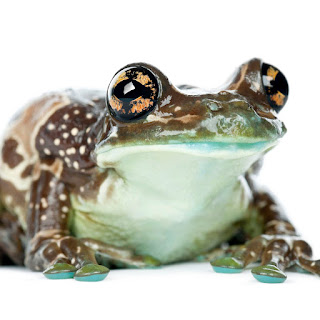World Frog Day 2020
World Frog Day is celebrated by many throughout the globe. The day is observed to raise awareness about frogs: amphibians found on land and water both. They are predators and play a crucial role in maintaining the environment during its lifetime. The World Frog Day has been celebrated since the year 2009. Scientists aver that in the recent years, frog species are under threat. Extinction is looming large over their populations due to many reasons such as deforestation.
 |
| Poisonous frog- Mannophryne trinitatis |
The World Frog Day is an awareness day to save these creatures from extinction and give afford them a safe environment to thrive and survive. It has been perceived as well as synchronized by several organizations across the globe. The World Frog Day is the biggest and most significant day of amphibian education as well as conservation action across the world. On this World Frog Day, there is a need to encourage appreciation as well as celebration of these amphibians by people across the world and from all walks of life.
 |
| BUFONIDAE (Toads)- Rhinella marina |
Very few people among the public are aware that frogs are disappearing. In fact, efforts aimed at amphibian conservation won’t be successful if the public is uninformed. The goal must be to make the crisis of amphibian extinction, particularly the frogs, common knowledge. The World Frog Day is the best that we can do to make this a reality! The World Frog Day can help educate communities about the importance as well as significance of amphibians.
In Trinidad and Tobago amphibians are only represented by the order Anura (frogs and toads). There are 35 species from 12 families currently recorded here. Of these several are endemic and some have quite restricted distributions. The most commonly encountered anuran is the cane toad or crapaud and one of the rarest is the endangered Golden Tree Frog only found on the highest mountains in the Northern Range.
Trinidad and Tobago's National Biodiversity website provides a detailed listing of frogs present in our islands. For more information, the website can be accessed using the following link- http://www.biodiversity.gov.tt/home/trinidad-a-tobago-biodiversity/fauna-checklist/vertebrates/amphibians.html

No comments:
Post a Comment